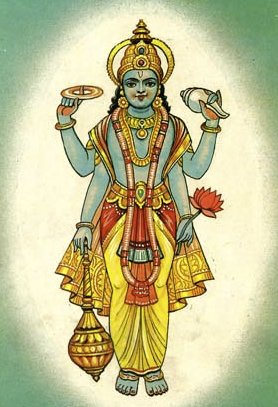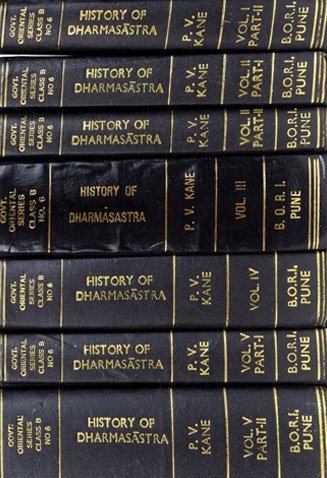Aparahna, Apara-ahna, Aparāḥṇa, Aparāhna: 13 definitions
Introduction:
Aparahna means something in Hinduism, Sanskrit. If you want to know the exact meaning, history, etymology or English translation of this term then check out the descriptions on this page. Add your comment or reference to a book if you want to contribute to this summary article.
In Hinduism
Purana and Itihasa (epic history)
Source: Cologne Digital Sanskrit Dictionaries: The Purana IndexAparāḥṇa (अपराःण).—When the sun passes three muhūrtas from the madhyāḥna.*
- * Vāyu-purāṇa 50. 96, 173.

The Purana (पुराण, purāṇas) refers to Sanskrit literature preserving ancient India’s vast cultural history, including historical legends, religious ceremonies, various arts and sciences. The eighteen mahapuranas total over 400,000 shlokas (metrical couplets) and date to at least several centuries BCE.
Vaishnavism (Vaishava dharma)
Source: Pure Bhakti: Bhajana-rahasya - 2nd EditionAparāhna (अपराह्न) refers to:—Late afternoon. (cf. Glossary page from Bhajana-Rahasya).
Source: Pure Bhakti: Arcana-dipika - 3rd EditionAparāhna (अपराह्न) or Aparāhnabhoga refers to “afternoon offering of refreshments” (such as fruits and sweets), according to the Arcana-dīpikā (manual on deity worship).—The procedure for offering foodstuffs (bhoga) is the same throughout the day.

Vaishnava (वैष्णव, vaiṣṇava) or vaishnavism (vaiṣṇavism) represents a tradition of Hinduism worshipping Vishnu as the supreme Lord. Similar to the Shaktism and Shaivism traditions, Vaishnavism also developed as an individual movement, famous for its exposition of the dashavatara (‘ten avatars of Vishnu’).
Dharmashastra (religious law)
Source: Srimatham: History of Dharmaśāstra1) Aparāhṇa (अपराह्ण) refers to the time after noon.—From very ancient times there were several ways of dividing the day. Sometimes the word 'ahaḥ’ is distinguished from night and sometimes it stands for the period from sunrise to sunrise (and includes day and night). For example, in Rig. VI.9.1 we have the dark day (i.e. night) and the bright day (i.e. the period when there is light). This part (viz. the period of sunlight) is divided some times into two parts viz. pūrvahṇa (period before noon) and aparāhṇa (the time after noon).—(Cf. Ṛgveda. X.34.11, Manusmṛti III.278.)
2) Aparahna (अपरह्न) refers to “afternoon”.—The day (of 12 hours) was often divided into five parts, viz. prāta or udaya (sunrise), saṅgava, mādhyandina or madhyahna (mid-day), aparahna (afternoon) and sāyāhna or astagamana or sāya (evening). Each of these five parts of day time will be equal to three muhūrtas. In some smṛtis and Purānas these five parts are mentioned and defined; e.g. in the Prajāpati-smṛti, vv.156157, Matsya Purāṇa 22.82-84, 124.88-90, Vayu 50.170-174.

Dharmashastra (धर्मशास्त्र, dharmaśāstra) contains the instructions (shastra) regarding religious conduct of livelihood (dharma), ceremonies, jurisprudence (study of law) and more. It is categorized as smriti, an important and authoritative selection of books dealing with the Hindu lifestyle.
Languages of India and abroad
Sanskrit dictionary
Source: DDSA: The practical Sanskrit-English dictionaryAparāhna (अपराह्न).—[fr.ahan changed to ahna P.II. 4.29, V.4.88.] the latter part of the day, the afternoon, closing or last watch of the day; Manusmṛti 3.278; अपराह्णशीतलतरेण शनैरनिलेन (aparāhṇaśītalatareṇa śanairanilena) Śiśupālavadha 9.4; °तन, °ह्णेतन (tana, °hṇetana) belonging to this time; °कृतं (kṛtaṃ) P.II.1.45.
Aparāhna is a Sanskrit compound consisting of the terms apara and ahna (अह्न).
Source: Cologne Digital Sanskrit Dictionaries: Shabda-Sagara Sanskrit-English DictionaryAparāhṇa (अपराह्ण).—m.
(-hṇaḥ) Afternoon, the last watch of the day. E. apara last, and ahṇa for ahan a day.
Source: Cologne Digital Sanskrit Dictionaries: Benfey Sanskrit-English DictionaryAparāhṇa (अपराह्ण).—i. e. apara-ahna, m., n. 1. The afternoon, [Mānavadharmaśāstra] 3, 255. 2. Evening,
Aparāhṇa (अपराह्ण):—[from apara] m. afternoon, the last watch of the day.
Source: Cologne Digital Sanskrit Dictionaries: Goldstücker Sanskrit-English DictionaryAparāhṇa (अपराह्ण):—[tatpurusha compound] m. n.
(-hṇaḥ-hṇam) The last part of the day; before sunset, e. g. atha yadūrdhvamaparāhlātprāgastamayātsa upadravaḥ &c.; the fourth part of the day or three Muhūrtas (= six Daṇḍas), if the day is divided into five equal parts, (Mitākṣara: aparāhlaśca pañcadhāvibhakte dine caturtho bhāgastrimuhūrtaḥ).—Besides the last definition Rādhākāntadeva alleges the following from vaidik and law texts: the last portion of the day, if the latter is divided into two halves; or the third portion of the day, if it is divided into three parts, i. e. the last ten Daṇḍas, if the division is into thirty Daṇḍas.—[The neuter gender of the word is given on the only authority of the Gaṇa to Pāṇ. Ii. 4. 31. and on that of the Gaṇaratnam., where it is also mentioned amongst the ardharcādi; but the Sūtra of Pāṇ. Ii. 4. 29. would be an explicit authority against the correctness of the neuter gender of this word, at least at Pāṇini’s period; comp. also the instances to V. 4. 88. and Viii. 4. 7.; and it may be observed, too, that the restriction, as regards the Dwigu compounds the latter part of which is rātri, as dvirātram, trirātram (Ii. 4. 29. v. 1.), belongs to a Vārttika which neither occurs in the Mahābhāṣya nor in the Kāśikā; comp. also the masc. forms dvirātraḥ, trirātraḥ, Kāśikā to Pāṇ. V. 4. 87.] E. apara (see I. 1. 3.) and ahna, a substitute of ahan (or as the Kāśikā explains: of aha, i. e. apara and ahan, samāsānta aff. ṭac), with the change of n to ṇa.
Source: Cologne Digital Sanskrit Dictionaries: Yates Sanskrit-English DictionaryAparāhṇa (अपराह्ण):—[aparā+hṇa] (hṇaḥ) m. Afternoon.
[Sanskrit to German]
Sanskrit, also spelled संस्कृतम् (saṃskṛtam), is an ancient language of India commonly seen as the grandmother of the Indo-European language family (even English!). Closely allied with Prakrit and Pali, Sanskrit is more exhaustive in both grammar and terms and has the most extensive collection of literature in the world, greatly surpassing its sister-languages Greek and Latin.
Kannada-English dictionary
Source: Alar: Kannada-English corpusAparāhṇa (ಅಪರಾಹ್ಣ):—[noun] = ಅಪರಾಹ್ನ [aparahna].
--- OR ---
Aparāhna (ಅಪರಾಹ್ನ):—[noun] the time of day from noon to evening; the afternoon.
Kannada is a Dravidian language (as opposed to the Indo-European language family) mainly spoken in the southwestern region of India.
See also (Relevant definitions)
Starts with: Aparahnabhoga, Aparahnaka, Aparahnakrita, Aparahnatana.
Ends with: Mahaparahna.
Full-text (+1): Aparahnika, Aparahnatana, Ahna, Aparahnaka, Aparahnabhoga, Aparanam, Ashtakaliya-lila, Aha, Bhoga, Astagamana, Saya, Madhyandina, Udaya, Madhyahna, Sangava, Prata, Sayahna, Purvahna, Samdhya, Kutapa.
Relevant text
Search found 12 books and stories containing Aparahna, Apara-ahna, Aparāḥṇa, Aparāhna, Aparāhṇa; (plurals include: Aparahnas, ahnas, Aparāḥṇas, Aparāhnas, Aparāhṇas). You can also click to the full overview containing English textual excerpts. Below are direct links for the most relevant articles:
The Agnistoma Somayaga in the Shukla Yajurveda (by Madan Haloi)
Part 2.5: The Piṇḍapitṛyajña Sacrifice < [Chapter 2 - An Introduction to the Ritualistic Religion of the Vedas]
Part 1.4: Consecration rite (dikṣaṇīyeṣṭi) < [Chapter 4 - The Agniṣṭoma Ritual]
Bhajana-Rahasya (by Srila Bhaktivinoda Thakura Mahasaya)
Chapter 5 - Pañcama-yāma-sādhana (Aparāhna-kālīya-bhajana–kṛṣṇa-āsakti)
Text 22 < [Chapter 5 - Pañcama-yāma-sādhana (Aparāhna-kālīya-bhajana–kṛṣṇa-āsakti)]
Text 6 < [Chapter 1 - Prathama-yāma-sādhana (Niśānta-bhajana–śraddhā)]
Chaitanya Bhagavata (by Bhumipati Dāsa)
Verse 1.15.126 < [Chapter 15 - Marriage with Śrī Viṣṇupriyā]
Verse 2.23.156 < [Chapter 23 - Wandering about Navadvīpa On the Day the Lord Delivered the Kazi]
Verse 1.15.79 < [Chapter 15 - Marriage with Śrī Viṣṇupriyā]
Puranic encyclopaedia (by Vettam Mani)
The Skanda Purana (by G. V. Tagare)
Appendix 3 - Purāṇic measurements of time < [Appendices]
Chapter 206 - Procedure for Performing Śrāddha < [Section 1 - Prabhāsa-kṣetra-māhātmya]
Chapter 205 - Brāhmaṇas Unfit for Śrāddha < [Section 1 - Prabhāsa-kṣetra-māhātmya]